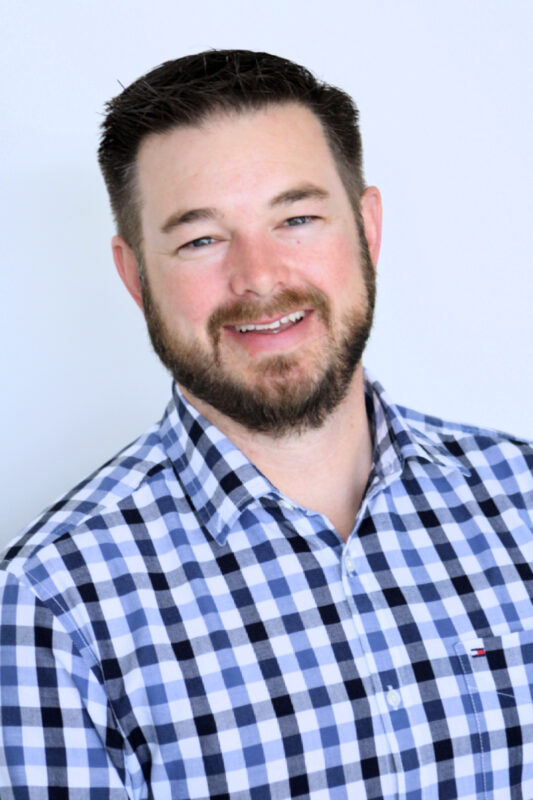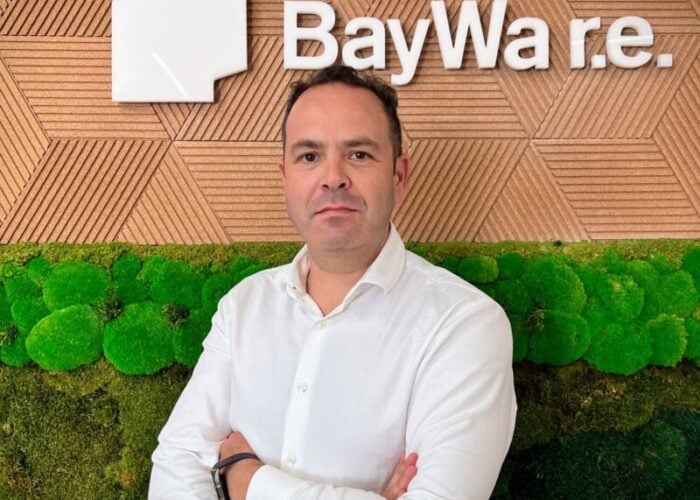
Earlier this year, German battery manufacturer sonnen launched a new virtual power plant (VPP) in Sweden, its latest move to reinforce energy grids following work in both its home country and the US. VPPs, typically a combination of renewable power generation facilities and storage systems, have often been used to accelerate the deployment of small-scale renewable power, such as rooftop solar, as these systems can manage power demand and supply without power grids having to be upgraded, which can require time and investment.
However, as sonnen senior VP of VPP project business, Geoff Ferrell, tells PV Tech Premium, the benefits of a more sophisticated power management and distribution structure could be seen on a larger scale.
Unlock unlimited access for 12 whole months of distinctive global analysis
Photovoltaics International is now included.
- Regular insight and analysis of the industry’s biggest developments
- In-depth interviews with the industry’s leading figures
- Unlimited digital access to the PV Tech Power journal catalogue
- Unlimited digital access to the Photovoltaics International journal catalogue
- Access to more than 1,000 technical papers
- Discounts on Solar Media’s portfolio of events, in-person and virtual
Or continue reading this article for free
“The future is a harmonisation and a better utilisation of the grid that exists,” explains Ferrell. “We talk about off-grid and micro grids, and there are a lot of companies out there talking about grid defection or telling a utility to buzz off or whatever [but] as an industry, we don’t do a great job being transparent about what it is that we’re selling.
“One of the approaches that we, as an industry, and we, as sonnen, have taken is that it’s not about grid defection, it’s about grid partnership and utility partnership,” he added, suggesting that the greater use of VPPs, and all the autonomous and intelligent systems that they involve, would help balance the two great and often conflicting demands of utilities: providing power to customers, but doing so in a way that is commercially viable for all involved.
A smarter grid
“The reality is that magically, if I could drop a million batteries into Utah tomorrow, and the utility could use them in the way that they’re using the 5,000 or so that they’re using today, prices would drop,” says Ferrell, pointing to the delicate balancing act in the renewable power-plus-storage space: greater renewable power generation capacity, and greater storage capacity, could be of benefit for a particular user, but could significantly disrupt power prices across the grid.
For instance, figures from the European Commission show that, in the second quarter of this year, renewable power, primarily wind and solar, accounted for a record 52% of the EU’s electricity generation, compared to a record low of 20% for fossil fuels. However, this quarter also saw an average power price of €60/MWh, a full 33% lower than in the second quarter of 2023, a significant decline that does not even take into account the power price changes in response to disruptive events beyond the energy sector, such as the Covid-19 pandemic and Russia’s invasion of Ukraine, in recent years.
“So if we do this right, if we harness these machines that have been built very carefully over decades and decades, and we partner with utilities and markets better, it will have the net effect we’re looking for: we will get lower carbon energy in the grid 24/7, we will have lower prices and we’ll have greater sustainability and greater interoperability for all the stakeholders involved,” explains Ferrell.
This considerable potential is why VPPs, according to Ferrell, are “definitely primed for growth”. Earlier this year, sonnen launched a collaboration with energy management platform Tibber in Sweden, which saw sonnen customers receive additional payments for involving their batteries in the frequency containment reserve (FCR) market, an example of a smarter energy management system looking to provide more reliable power for both consumers and a wider grid.
“Automation and intelligence are something that partners are certainly asking [for],” explains Ferrell. “AI has become the new new term! Last year, in the industry it was ‘VPP’, before that we had things like blockchain and I think AI is the phrase right now.
He goes on to suggest that more sophisticated energy management systems could go above and beyond demand response systems, which have come to dominate much of the discussion around VPPs and take a more proactive approach to electricity generation and usage.
“[Our work] kind of diverges a little bit from the term ‘VPP’ as it’s recently been defined,” says Ferrell. “VPP encompasses demand response products and energy storage systems, and different things that have different levels of participation and efficacy in the marketplace.
“We really think that where it’s growing and really primed for growth is in this movement away from demand response products – thermostats, lightbulbs, pumps, these types of things – into what we’ve always done, which is energy storage systems, which can be extremely dynamic, extremely fast responding and can do more than just demand response.
“We can provide demand response – that’s what the market or the utility operator is looking for – and we can also do things like reverse demand response, or net injection, or pulling loads at very precise hour levels, as they’re requested.”
Making solar reliable
When asked about the potential impacts on the global energy mix of this adoption of a smarter energy management system, Ferrell expresses optimism that systems like VPPs could be used to help manage a technologically diverse and renewable power-driven, energy mix. “That is certainly my hope,” he says.
“The indicators would seem to be swinging that way,” he adds. “Diversification, both in generation source and generation location, in every industry that we’ve ever seen something like that, have proven themselves more reliable, less expensive long-term and to be the prevailing solution. I don’t think energy is any different.”
When asked about solar power in particular, Ferrell says that it would likely be “extremely important” in the future of the energy mix, but that it could benefit from a change in perception, at least in the US.
“The issue with solar is, at least in the US and how it’s viewed by the utilities, is that it’s almost like it doesn’t exist,” Ferrell says. “The utility cannot plan on solar alone because it’s so variable, it’s so volatile, it’s so interruptible – a cloud rolls over, a customer turns it off, or whatever happens – and what ends up happening is we see a lot of curtailment.
“And when curtailment happens, a lot of that curtailment starts with renewables, which is the most shameful thing we can do; we’ve taken the time to harness this free, abundant clean energy and then the utility is forced to curtail it because it doesn’t have the ‘plan-ability’ and effectiveness of a nuclear power plant or a gas power plant has, as part of their internal resource plan.
“VPPs, I believe, helps us solve that problem,” adds Ferrell, who goes on to highlight that, often, utilities have a legal obligation, first and foremost, to provide reliable power to their customers at an affordable price. If solar is to account for a larger piece of the US energy pie, systems such as VPPs, which could improve the perception of solar as a cost-effective and reliable power source, may prove to be vital.
“It firms up, or makes solar and renewables fully dispatchable, fully dependable [and] fully reliable in ways that utilities can start to put these types of assets, that are controlled by a battery, into their resource planning, and know that when they call on them, those resources will be there.”
Delivering on obligations, keeping up with technology
For Ferrell, the greater use of VPPs could help ensure a reliable source of power, which fits the criteria of what he calls a “better-quality kilowatt-hour”.
“Any time we can create a better-quality kilowatt hour – meaning lower carbon footprint, lower price and be a better steward of the source energy where it came from – I think that’s a good thing for us,” he says. “I think, at least the utilities I’ve talked to, want to do that and are aligned around that, but at the same time they’re legally obligated to maintain a reliable grid, and make sure that when a customer turns on a light switch, that light switch turns on.”
This need to present solar power as reliable is of particular importance, considering, as Ferrell says, a number of markets around the world are becoming increasingly liberalised.
“It becomes incumbent on us, as the aggregators, as the developers, as the producers of these programmes and assets – to do it in such a way that when you go to market you’re bringing an asset to market that can compete in that marketplace,” says Ferrell. “If you create a solar farm and your embedded costs are US$0.30/kWh, and you’re trying to go to market, you’re just not going to get picked up.
“The flip side is that, ultimately, this becomes easier for the grid operators because they say ‘it doesn’t matter where this came from, I’ve got this asset, they’re telling me they can provide energy at US$0.12/kWh, I’m going to pick that up’.”
Ferrell also says that the pace of technological innovation in the solar sector in particular – with new cell efficiency records and new module launches happening frequently – is perhaps “the biggest challenge” for a company like sonnen, which works with a range of actors and decision-makers in the space.
“It’s true of any technology, and true of humanity since the beginning of the industrial revolution, technology moves so quickly. What we thought was a great idea, or the ultimate in efficiency or connectivity a month ago or a year ago is archaic.
“From my side of the equation, and what a VPP can do is provide stability to whatever it is that’s installed,” he adds. “So whether that solar array is five years old, five months old or being installed next month, they’re going to look wildly different – more or fewer panels on that rooftop, for example – but the VPP can say: ‘it’s kilowatt hours. I’m going to collect kilowatt hours, I’m going to store it in my battery, and I’m going to make it available in the market’.
“That software piece is where we can really shine because that’s coding, that’s just ones and zeroes, and can be done so fast to respond to the changing market [and] the changing prices to ensure that this fixed asset can continue to be relevant and monetise in the market for years and years to come.”
This is perhaps the ultimate objective of a VPP used in a utility-scale setting: helping to manage and make available an increasingly variable energy mix, in a way that is reliable and commercially sustainable, for the long-term.
“If we do a good job with our partners and our developments of getting the resources in place, and we create commercially viable models where people want to put solar on their rooftop, solar on commercial buildings and solar on parking lots – and wind where it’s appropriate, pumped hydro where it’s appropriate – and then harness that properly so the market can see it and use it when it needs it, we might really have a model that works really well for years to come,” Ferrell concludes.







